Samuel D. Coykendall, the creator of Alder Lake, spent most of his time overseeing his business empire from his home base in Kingston, New York. He didn't scrimp though on the building of his vacation home at Alder Lake. It was a massive 10,900 square-foot structure, standing 2-1/2 stories tall, and has been described as being half timber and half stone, built on a limestone foundation. I have been unable to find any good photographs so far of the house when used by Coykendall or the fishing and hunting club.
The first time I saw the house was in 1963 when my troop hiked over from Onteora. We had been told not to disturb the people living in it so we made a wide detour past it and we hiked into camp. That night, though, we were invited to the house for an animal show. The house was being used by Niles Fairbairn, the camp caretaker, who lived there with his family and their pet otter, who had appeared in Disney's Flash, The Teenage Otter, a 1961 television episode (click here for a full description of the show, taken from my book The Wonderful World of Disney Television.) Scouts would gather at the house to watch the otter perform, and I remember going inside and being impressed by the place. Click here for an article about Fairbairn from the February 1965 edition of The Nassau Charger, the Council's newsletter. Fairbairn, by the way, was honored by having a campsite named for him in Onteora's Buckskin Camp. Fame is fleeting, though, and the campsite has been lost to time. Fairbairn died on March 11, 1965, his 78th birthday.
I didn't bring a camera with me on that trip so I don't have any photos of the house from then or of Flash. Jim Davenport sent me some pictures from 1966 which are in the Photo Album section of this site. Here's one showing the house that gives an indication of just how big it was, especially compared to the people sitting on the lawn on the right side of the image.
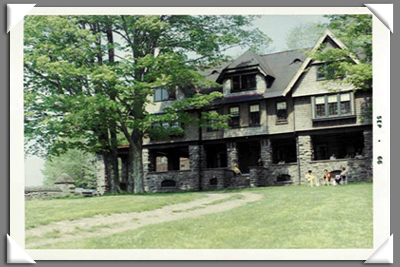
The Coykendall Lodge (1966)
As mentioned earlier the Boy Scouts gave up Alder Lake in 1980 and it became the property of the state of New York. The state operated it as a Youth Conservation Corps camp for one year, then shuttered the place and just walked away from it. Apparently no one could decide what to do with the property so the state did nothing, and I mean nothing. Instead of even renting it out for a token $1 per year to someone that could keep an eye on the place, they let the building sit there deserted in the woods.
The weather in New York can be hard on wooden buildings, and it certainly took a toll on the Coykendall house. What the weather did though was nothing compared to what people did. Empty buildings seem to attract vandals like moths to a flame, and sadly they found their way to Alder Lake. The once grand lodge was trashed, with most of the windows smashed out, and wanton damage to the walls inside. The destruction was severe; the copper pipes and plumbing were ripped from the walls, and the boilers and furnace hauled away for their scrap metal value.
As bad as all the man-made destruction was, it paled by what happened when the state didn't take care of the roof or board up the smashed windows. Water got into the structure, and before too long everything inside was a moldy, warped mess. Bats got into the attic and the place reeked of guano that was piled everywhere upstairs. That is until the floors began to give way and the guano ended up downstairs as well.
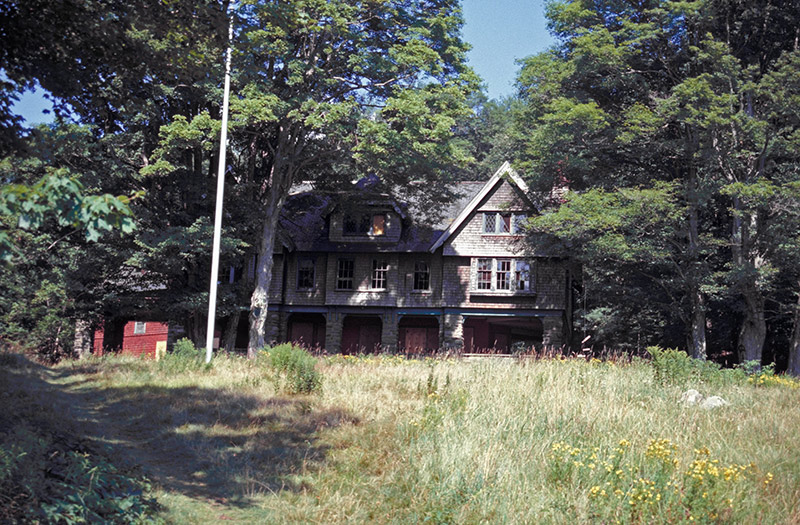
The Coykendall Lodge (1988)
A visit back to Alder Lake in 1988 showed some dramatic and sad changes. The camp was closed, no longer the property of the Boy Scouts. The lake and surroundings were quiet and completely deserted. The once magnificent manor home was in ruins, completely boarded up. While it still looked good from a distance, a closer look showed the true story. Sadly, in the coming years things would only get worse.
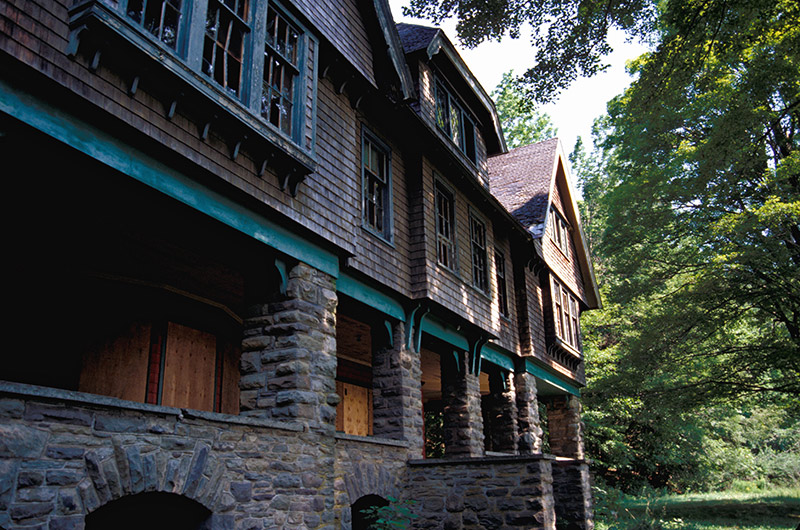
The Coykendall Lodge (1988)
At the time of that visit the house may have been salvageable with a lot of work and a lot of money, but due to the state's complete indifference it continued to quietly rot away in the woods as the years passed.
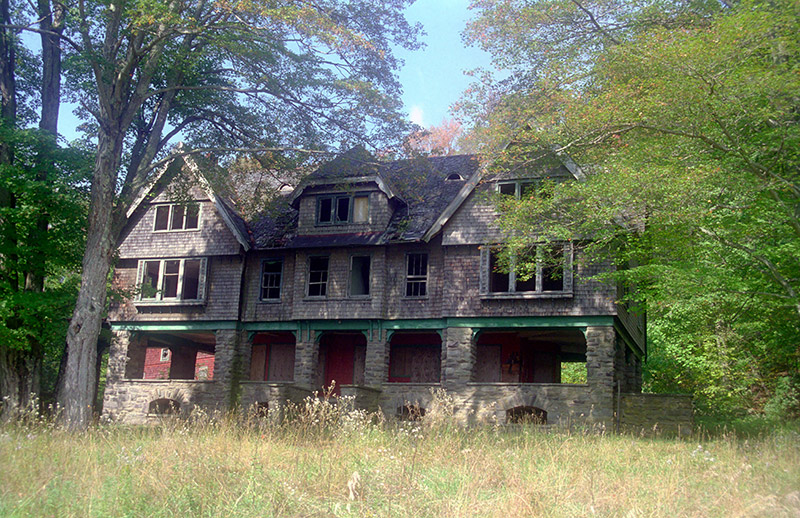
The Coykendall Lodge (1998)
A return visit ten years later showed that the vandals had continued to return as well. By then every piece of glass was broken, and the inside was a jumble of fallen ceilings, smashed paster walls, and the ever-present bat droppings. In 1997 the state had began talking about tearing it down before someone got hurt in the ruin, but a group of concerned citizens formed the Alder Lake Restoration Society with the hope of somehow saving and restoring the building. A survey was performed of the building, which was found to be structurally sound despite the extensive damage, but the report estimated it would take a minimum of $1.5 million to restore the building to a safe condition, and more to fully restore it for public access.
Once again nothing was done to try to preserve the house, making it fairly apparent that the state just wanted it gone as part of the "Forever Wild" philosophy the Department of Environmental Conservation espouses for the Catskills, Adirondacks, and probably other parts of the state. Surely something could have been done to slow the decline; tarping the roof, and plastic sheets on the gaping windows, perhaps? None of this was done, and another visit in 2001 showed there was no hope by then of turning back the clock and saving it.
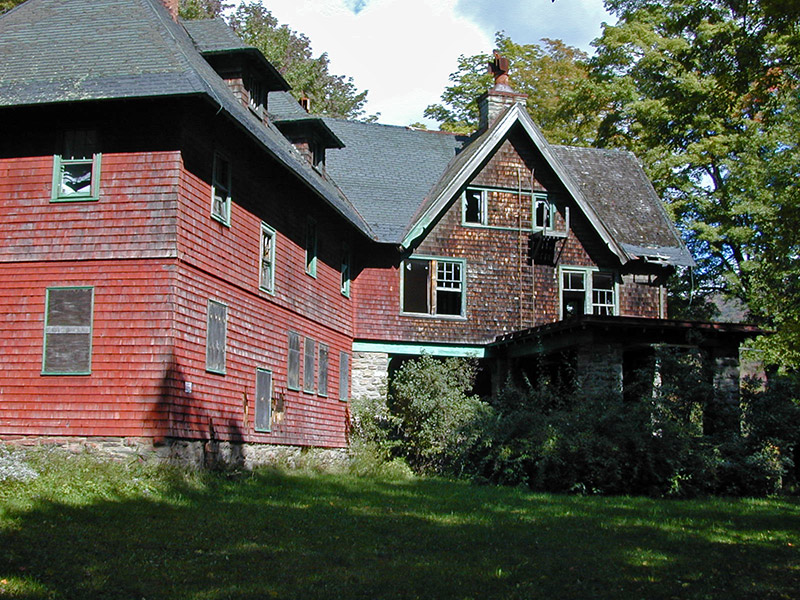
The Coykendall Lodge (2001)
Kitchen area and servant's quarters
This is a view of the house's kitchen and staff area off to the left. One can only imagine life during the property's heyday, and the parties that would have required a kitchen of this size. Upon first glance it looked like the house was still in pretty good shape. That is if one ignored the pile of broken toilets and kitchen equipment strewn behind the building to the left of this view, and if you didn't go to the front of the house.
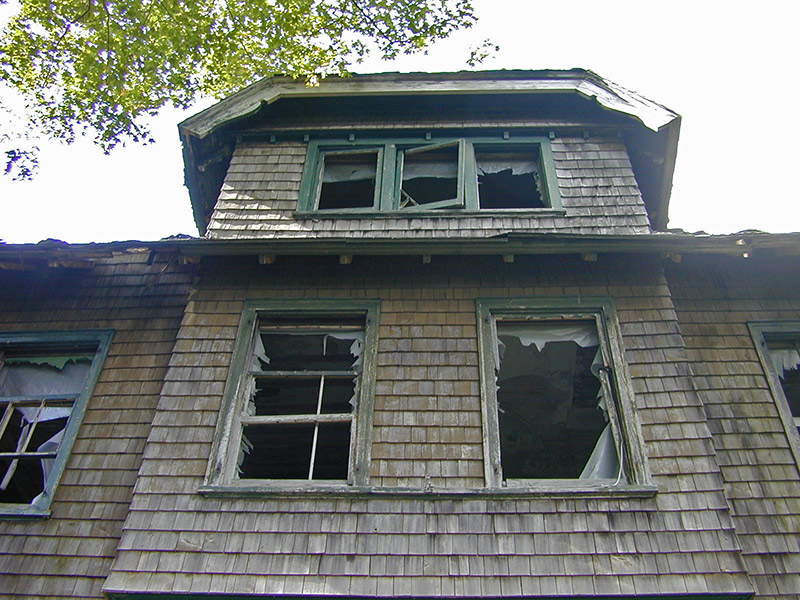
The Coykendall Lodge (2001)
As mentioned, every pane of glass had been smashed, leaving the building completely exposed to the elements. However, that wasn't the worst of it.
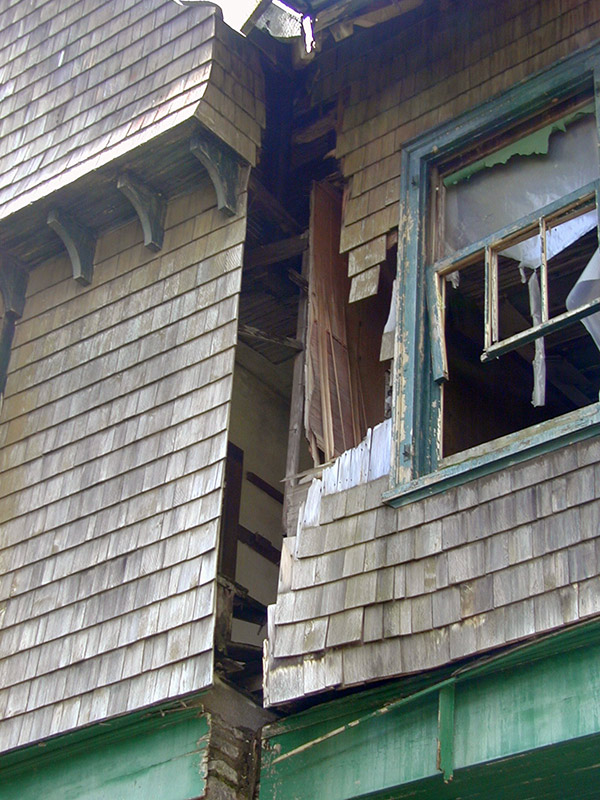
The Coykendall Lodge (2001)
Years of exposure to the elements had caused the building to start splitting apart, leaving gaping wounds that then let even more water inside. Some parts of the house had been pulled a foot or more away from the rest of it, and some sections sagged ominously. It looked like it would collapse soon of its own weight.
Despite the overwhelming damage, the preservation group pushed forward with their efforts, resulting eventually with the lodge being added to the National Register of Historic Places on January 11, 2002. That was a promising development, but finally everyone threw in the towel and it was announced in 2008 that the building would be torn down.
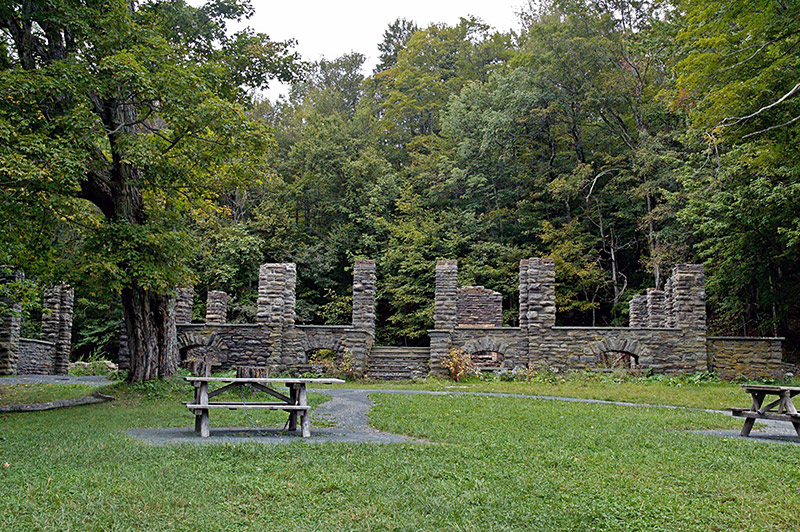
The sad remnants of the Coykendall Lodge (2009)
A year later the building was gone. Well, most of it. In its infinite wisdom the state decided to leave the stone sections in place so visitors could "interpret" how it might once have looked. How this fits the "forever wild" concept escapes me, but it's apparently due to a loophole in the preservation laws that allowed the state to bypass restrictions on demolishing the building. One might think the state could have added some signage with pictures and a history of the house. One would be wrong.
Want even more information on Alder Lake? Please use the menu below.